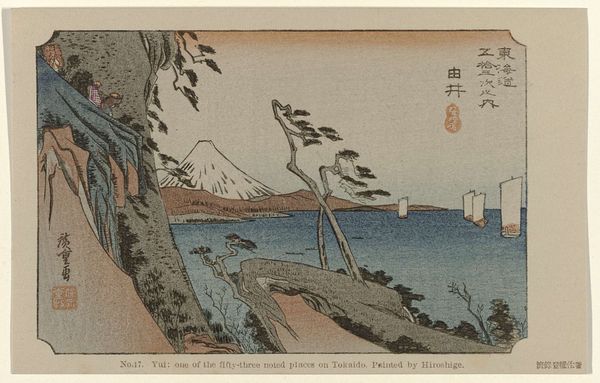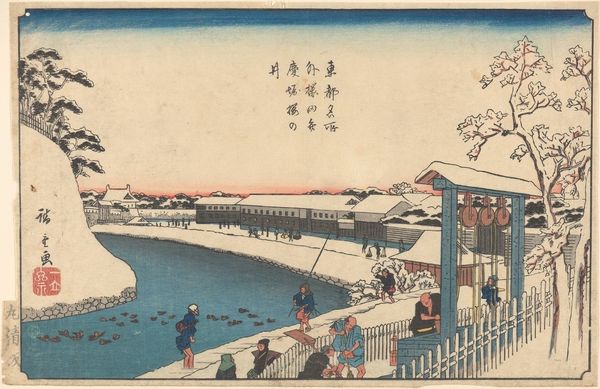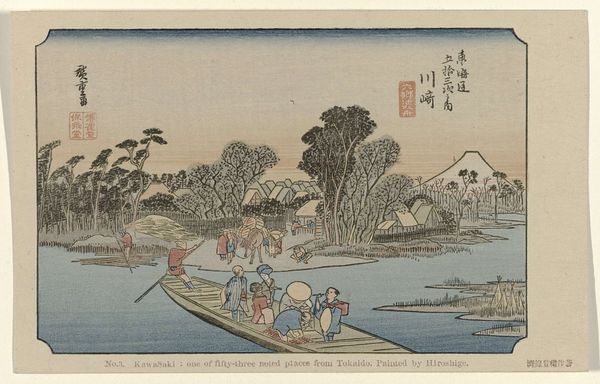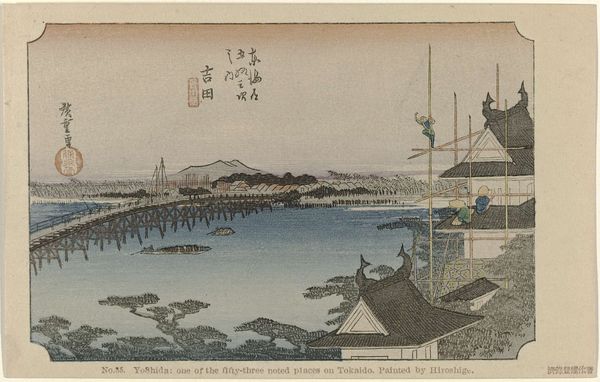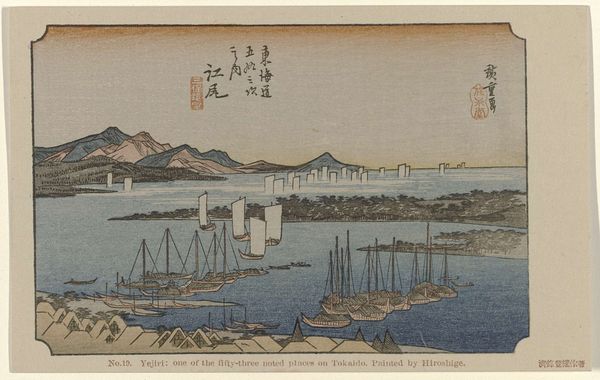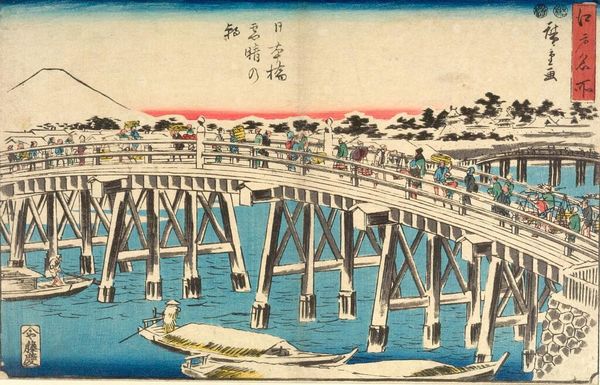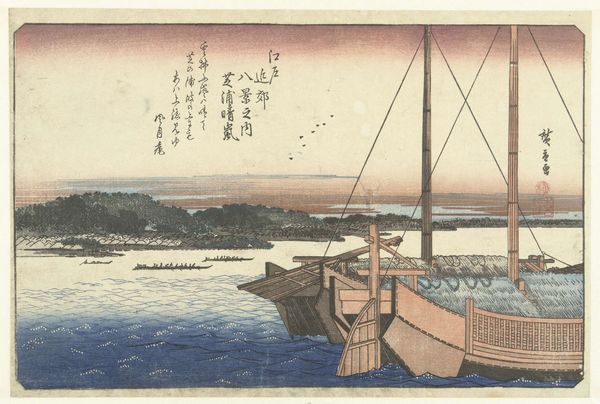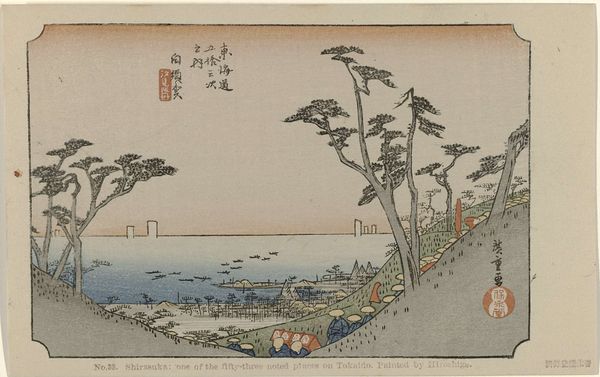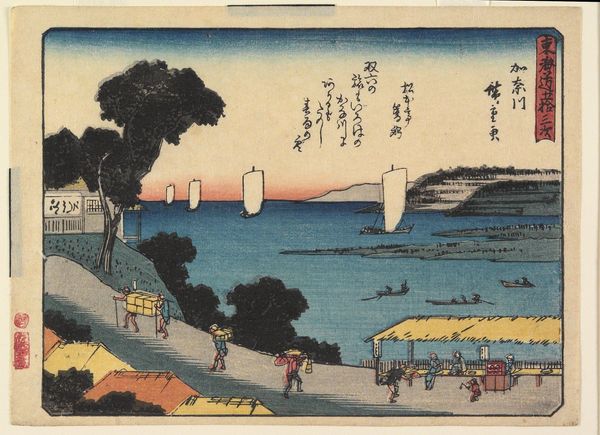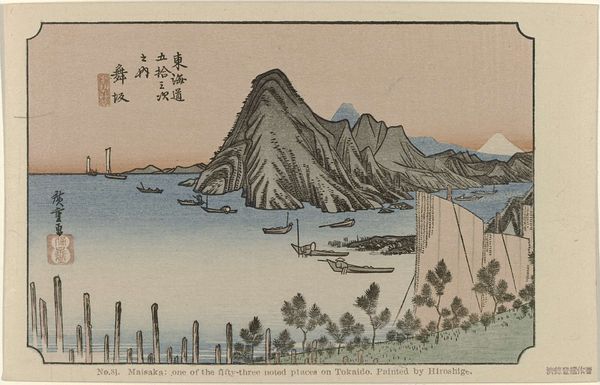
Dimensions: height 90 mm, width 141 mm
Copyright: Rijks Museum: Open Domain
Editor: This is a woodblock print called "Kanagawa" by Utagawa Hiroshige, created in 1906. The scene has a calm feeling, despite the busy-ness of the shore and sea, I’d say. What do you see in this piece, from your perspective? Curator: It's crucial to understand that Japanese woodblock prints like this were not merely artistic expressions, but commodities produced for a growing urban consumer class during the Edo period. "Kanagawa," as part of the "Fifty-three Stations of the Tokaido" series, demonstrates the commodification of travel and landscape. Editor: That's fascinating. How did that affect the artist, Hiroshige? Curator: Hiroshige was both artist and artisan, working within the constraints of publishers and popular taste. His genius lay in fulfilling those expectations while imbuing the prints with a distinctive style. Think about how the composition cleverly frames everyday life with aesthetic value. Are we really looking at an everyday view, or are we consuming an idealized version of travel? Editor: That tension between the everyday and idealized is really interesting. So the market played a big role in shaping this art. Curator: Precisely. These prints served not only as souvenirs but also as reflections of broader social changes: the rise of a merchant class, increased internal travel, and a growing appetite for images of the world. It also shaped the way "Japan" was seen abroad. Notice the composition? Do you see similarities to Western modes of framing? Editor: I do see the strong horizon line and receding perspective on the shoreline that are often associated with Western landscape painting. It almost feels like he’s catering to different audiences at once. Thanks, that makes me rethink how I see the art. Curator: And for me, you’ve reaffirmed that understanding the socio-political context of art makes a more complete and relevant viewing experience.
Comments
No comments
Be the first to comment and join the conversation on the ultimate creative platform.
